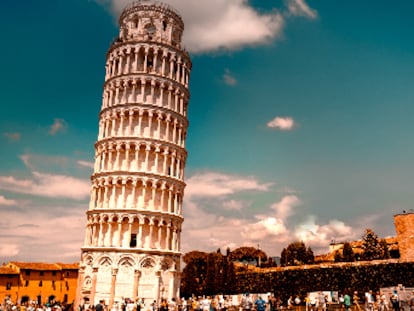Cable que situa a Espa?a como "un frente activo en la guerra contra el terror"
Mayo de 2005. "Espa?a es a la vez un significativo objetivo para el terrorismo isl¨¢mico y un centro importante para los extremistas isl¨¢micos alrededor del mundo", informa la embajada estadounidense.
| ID: | 40665 |
| Date: | 2005-09-15 10:18:00 |
| Origin: | 05MADRID3260 |
| Source: | Embassy Madrid |
| Classification: | SECRET |
| Dunno: | 04MADRID1142 05COPENHAGEN1220 05MADRID1349 05MADRID1809 05MADRID2082 05MADRID2223 05MADRID2537 05MADRID645 05STATE144222 |
| Destination: | This record is a partial extract of the original cable. The full text of the original cable is not available. |
S E C R E T SECTION 01 OF 08 MADRID 003260 SIPDIS EUR/PGI FOR REASOR AND WEINSTEIN XXXXXXXXXXXXXX DS/IP/EUR DS/ICI/PII DS/DSS/ITA E.O. 12958: DECL: 09/05/2015 TAGS: PTER, PGOV, SP, Counterterrorism SUBJECT: SPAIN: AN ACTIVE FRONT IN THE WAR ON TERROR REF: A. A) STATE 144222 B. B) COPENHAGEN 1220 C. C) MADRID 1349 D. D) MADRID 2223 E. E) MADRID 1809 F. F) MADRID 2082 G. G) MADRID 2537 H. H) MADRID 0645 I. I) 2004 MADRID 1142 Classified By: Polcouns Kathy Fitzpatrick; reason 1.5 (B) and (D). 1. (C) Summary. Spain is both a significant target of Islamic terrorist groups and a major logistical hub for Islamic extremist groups operating across the globe. The March 11, 2004 train bombings made Madrid the site of the worst terrorist attack in the history of the EU and triggered the second major crackdown in three years against Spain-based Islamic terrorist groups. Historically, Spain-based extremists have tended to be older (30-40 years), first-generation immigrants with a history of militant activity in their home countries. The first Islamists did not establish themselves in Spain until the late 1980s and early 1990s, coming mainly from Syria and Algeria. The influx of large numbers of North African immigrants is changing the profile of Spain-based Islamic extremists, creating a large pool of young, alienated men available for recruitment. 2. (C) Extremist groups active in Spain tend to be decentralized, collaborating on an ad hoc basis and united more by friendships, family ties, and loyalty to the global jihadist cause than by membership in any given terrorist organization. While Spain-based groups at first focused on organizing themselves and providing logistical support to extremists in other countries, they became increasingly aggressive after the September 11 attacks and the subsequent GOS crackdown on Islamist terrorist cells in Spain. Spain's withdrawal of troops from Iraq does not appear to have reduced the desire of extremists to strike at Spanish targets and Spanish authorities, long focused on Basque terrorism, have shifted gears to deal with the growing threat posed by Islamic extremists. Police have disrupted multiple terrorist networks over the last year, including a group that funneled suicide bombers from Spain to Iraq, and are currently holding approximately 130 suspects in connection with Islamic terrorist activities. In July, the GOS concluded a four-year investigation and trial of 24 members of a local al-Qa'ida cell; the Court is expected to render a decision September 20. There are at least 300 suspected Islamist terrorists or logistical operatives in Spain and the Ministry of Interior's senior terrorism adviser believes there may be as many as 1,000. Spain-based terrorists are believed to target local USG interests; for example, one of the Madrid train bombers was spotted conducting surveillance of the Embassy building one year prior to the train attacks. The rapid growth of the Moroccan immigrant community, combined with worrisome trends among Spain-based extremist groups, suggest that Spain is likely to remain an active front in the war on terror for many years to come. End Summary. //THE ISLAMIC COMMUNITY IN SPAIN// 3. (C) There are an estimated 600,000-800,000 Muslims in Spain, and possibly up to one million, the majority of them recent immigrants from Morocco. The recent upsurge in illegal immigration makes a more accurate figure difficult to establish. Not surprisingly, the growth of Spain's Islamic population has been especially robust in its North African enclaves of Ceuta and Melilla, where a GOS report forecast that Muslims would become a majority within the next several years (and warned that only 40 percent of residents considered themselves "pro-Spanish.") Prior to the arrival of large numbers of North African immigrants in the late 1990s, Spain's Muslim population was comprised of immigrants from Pakistan and the Middle East, as well as a growing number of Spanish-born converts to Islam. Spanish converts, numbering some 20,000, tend to gather and to worship at their own institutions. Converts are well represented in Spain's leading Islamic institutions including the Islamic Commision of Spain (CIE), which serves as the official interface between the Islamic community and the Spanish government. The CIE includes major organizations such as the Islamic Federation of Spain and the Union of Islamic Communities in Spain. Over 240 mosques and 64 religious communities are officially registered with the CIE; approximately 160 mosques in Spain do not belong to the CIE. Immigrants rights organization "ATIME" is not a religious group, but most of its members are Moroccan Muslims. ATIME recently angered CIE leaders by proposing the creation of a new Islamic council to incorporate the views of more recent arrivals in Spain and establish controls to monitor against the teaching of extremist ideologies by imams (implying that the CIE does not adequately represent the views of the growing Moroccan community or police its own members). Observers believe that no more than 15 percent of Spanish Muslims regularly attend religious services, though many likely attend services at informal houses of worship, known as "oratorios." 4. (S) Until now, the broader Muslim community in Spain has been of little importance to the activities of local extremist groups. During the 1990s, the vast majority of Spain-based Islamist radicals were recent immigrants with a history of militant activity in their home countries. Very few were second-generation immigrants or Spanish converts to Islam. Islamic extremists coalesced in Spanish mosques and continue to use them to distribute propaganda and scout for new recruits, but they have had only limited success in using mosques to tap into the broader Muslim community. Authorities believe Islamist radicals prefer informal religious instruction groups as a way to attract new members and maintain group cohesion rather than working in mosques where they are vulnerable to surveillance by police and other mosque members. 5. (S) Spain's largest mosque is co-located with the Islamic Cultural Center in Madrid and is popularly known as the "M-30 Mosque" because of its proximity to the M-30 highway, a principal artery through Madrid. The M-30 Mosque is funded by the Government of Saudi Arabia. Though the imams at the M-30 Mosque are considered moderate by Spanish authorities, suspected extremists are known to attend services there. Prosecutors are investigating the former director of M-30 Mosque for his alleged role in transferring funds to a suspicious NGO; the USG is assisting with this investigation. Separately, three imams from the Catalan region were the key figures in a network that facilitated the movement of jihadists from Spain to Iraq to undertake terrorist acts against Coalition and Iraqi Government targets. Their mosques served as recruitment and indoctrination centers for terrorist volunteers. This network was dismantled by police in June, 2005. In addition to recruiting through mosques, Islamist radicals distribute propaganda at Koranic schools, halal butcher shops, and Islamic centers. 6. (C) Islamic extremists are not connected to any political organization in Spain. There are no Islamist (or even Islamic) political parties that could be used as a cover for jihadist activities. This may begin to change as the burgeoning population of North African immigrants, especially Moroccans, begins to establish its own institutions in Spain. There are no significant Spain-based Islamic extremist publications, though many Spanish extremists have connections to publications elsewhere in Europe, such as London. //ISLAMIC TERRORISM - A RECENT ARRIVAL IN SPAIN// 7. (C) Though Spain was the site of several Islamic terrorist attacks during the 1980s, including a 1985 bombing by Islamic Jihad near Torrejon Air Base outside of Madrid that killed 18 and wounded 82, there are few indications of extremist groups operating from Spain prior to the mid 1990s. The first Islamic terrorist organizations were formed by Syrian members of the Muslim Brotherhood who had fled repression by the Asad regime and settled in Spain in the late 1980s. Police believe Palestinian radical Anwar Adnan Mohamed Salah, AKA "Chej Salah," and Syrian al-Qa'ida member and propagandist Mustafa Setmarian, AKA "Abu Mus'ab al-Suri," played a critical role in organizing Syrian exiles in Spain to support the international jihadist movement. In 1994, Setmarian moved to London to work with the Algerian Armed Islamic Group (GIA) publication "al-Ansar" and Salah went to Pakistan to work with al-Qa'ida leader Abu Zubaydah in funneling recruits to terrorist training camps in Afghanistan. From 1995 until his 2001 arrest, Imad Eddin Barakat Yarkas led the Syrian group in Spain, during which period this cell expanded its activities and aided the development of other Islamist extremist groups. Yarkas and many of the other Syrian extremists were relatively educated, prosperous, and projected the appearance of being well established in Spain. They reportedly raised terrorism funds by working with Moroccan criminals engaged in fraud, robbery, and theft of mobile phones. 8. (C) As Syrian extremists were becoming more organized to lend support to international jihadist movements, Algerian GIA members began arriving in Spain in significant numbers, fleeing capture by the Algerian authorities. GIA members settled in eastern Spain, mostly near Alicante and Valencia, which have ferry connections to Algerian ports. Many GIA members in Spain acted in a support capacity for GIA fighters in Algeria, though some moved on to work for international jihadist causes. The Salafist Group for Call and Combat (GSPC), which eclipsed the GIA in Spain as elsewhere, was detected by 2001 and in June of that year Spanish police arrested GSPC member Mohamed Benshakria, who had fled Germany to avoid arrest in connection with the "Meliani cell" that had planned terrorist attacks in Strasbourg. 9. (C) South Asian extremists also arrived in Spain, with most settling in the large Pakistani communities in Barcelona, Bibao, Santander, and Logrono. Pakistani Islamist radicals appear to play a mainly logistical role, particularly in providing false documents and in transferring funds. Spanish authorities are concerned that extremist elements may have insinuated themselves into Pakistani communities in the Catalan and La Rioja regions in order to provide support and raise funds for militant Pakistani/Kashmiri organizations such as Lashkar-i-Taiba, Harakat-ul Mujahideen, Jaish-e Mohammad, Lashkar-e Jangvi, and Jihad-e-Islami al-Alami. Recent reports indicate that Dubai is a key financial hub for Spain-based Pakistani hawala organizations, including those hawalas with links to crime and/or terrorism. Police arrested 10 Pakistani nationals on fraud charges in Barcelona in September 2004 and subsequently discovered indications that the group had apparently funneled money to senior al-Qa'ida figures in Pakistan and had made suspicious videos of Barcelona landmarks. The group remains in detention. //MOROCCANS ARRIVE// 10. (C) The most important recent development in the local Islamic extremist community has been the influx of Moroccan radicals. They arrived in the 1990s along with tens of thousands of Moroccan economic migrants, who have become by far the largest Muslim immigrant community in Spain (500,000 Moroccans compared to approximately 40,000 Algerians, the next-largest group). While some of the more important Moroccan extremists matched their Syrian and Algerian counterparts in terms of first-hand experience operating against their government, many low-level supporters were only recruited after their arrival in Spain. Moroccan extremists tend to be less well off and most are involved in criminal activity, such as drug trafficking (primarily hashish) and/or fraud. Since the September 11 attacks in the U.S., the Casablanca bombings in Morocco, the interventions in Afghanistan and Iraq, and the dismantlement of the Barakat Yarkas network, Moroccan extremists appear to have moved to the forefront of the jihadist community in Spain, at least in numerical terms. The large and growing Moroccan community provides Islamic extremist recruiters in Spain with an ample supply of poor, alienated young men and access to funds from drug trafficking and other illegal activities. //TERRORIST GROUPS ACTIVE IN SPAIN// 11. (S) The extremist community in Spain is decentralized, with few national or institutional barriers and frequent ad hoc collaboration among radicals from different organizations. Few local organizations emphasize themselves as a unit and organization names appear to be unimportant. However, many extremists in Spain are affiliated to some degree with organized jihadist groups in other countries. In total, police believe there are at least 300 Islamic radicals active in Spain and Ministry of Interior Senior Adviser on Terrorism Professor Fernando Reinares estimates there may be as many as 1,000 such extremists. Islamic terrorist organizations with a presence in Spain include: -- al-Qa'ida: Barakat Yarkas and other members of the Syrian group had direct links to al-Qa'ida. Barakat Yarkas is charged with murder for allegedly organizing Mohamed Atta's crucial meeting with Ramzi Binalshibh during Atta's final preparations for the September 11 attacks. A decision is expected in his case on September 20. Other extremist organizations in Spain draw inspiration from al-Qa'ida, but there is no clear indication that they act under instruction from the leadership of the organization. -- Moroccan Islamic Combat Group (GICM): Police have drawn connections between terrorists involved in the Madrid train bombings and the GICM figures that carried out the 2003 Casablanca attacks, but it appears that the Madrid bombings were organized and executed at the local level rather than under instruction from the GICM leadership. Senior GICM figure Hassan al-Haski was arrested in the Canary Islands in December 2004 for his alleged role in the March 11 train bombings. -- Salafist Group for Call and Combat (GSPC): According to Spanish authorities, GSPC members in Spain appear to act with a high degree of autonomy from their leadership in Algeria. Many suspected GSPC members seem to be acting in support of local and global jihadist causes rather than being dedicated to the conflict in Algeria. -- Armed Islamic Group (GIA): GIA was an important force during the formative period of Islamist extremist groups in Spain in the early 1990s, but no longer maintains a significant presence in the country, since many GIA members have been arrested, abandoned the GIA to join the GSPC, or joined other local Islamist causes. March 11 train bombing suspect Allekema Lamari served five years in a Spanish prison on charges of being a GIA member. -- Ansar-al-Islam: Ansar-al-Islam does not have a formal presence in Spain, but a Spain-based organization affiliated with the group was responsible for recruiting suicide bombers to attack coalition forces in Iraq. Spanish authorities dismantled the cell in June, 2005, jailing eight and holding seven for deportation proceedings. Three of those detained were imams at Barcelona-area mosques. The cell reportedly succeeded in sending Mohamed Afalah, an extremist involved in the Madrid train bombings, to Iraq where he may have carried out a suicide attack against Iraqi government or Coalition forces in May, 2005. -- Salafiya Jihadiya: Formed in the early 1990s by Moroccan veterans of the anti-Soviet struggle in Afghanistan, Salafiya Jihadiya supported or inspired many Moroccan jihadists, including several that worked with the organization in Morocco and later moved to Spain. -- Hizballah: Hizballah (which is not officially recognized as a terrorist organization by EU countries but is monitored by the Spanish security services) is believed to have a small presence in Spain in a fund-raising and logistical capacity. Spanish officials judge the risk of a Hizballah attack in Spain to be very low. //SHIFTING FACE OF EXTREMISM IN SPAIN// 12. (C) Nearly all known or suspected Islamic extremists in Spain are first-generation immigrants, most of whom have a history of religious fanaticism in their home countries or a close personal connection to a Muslim extremist. They are typically older than extremists in other countries, with the majority aged 30-40 and very few below the age of 25. As noted above, many of the first Islamists to take up activities in Spain had a good education and many had good jobs and were considered well integrated into Spanish society. That remains true for many among the second wave of Spain-based extremists, including Moroccans involved in the March 11 attacks. However, among North Africans suspected of involvement in terrorist activity there also many who are poor or unemployed and many have criminal records for drug trafficking, robbery, or fraud. The growing pool of disaffected young North Africans is likely to become the major recruiting pool for extremist organizers over the coming years. //IDEOLOGY ERASES ORGANIZATIONAL BOUNDARIES// 13. (C) Spain-based Islamist extremists are strongly influenced by the "Takfir Wal Hijra" doctrine, which justifies the use of illegal proceeds to fund jihadist operations and accepts non-Muslim practices such as drinking alcohol and drug trafficking as a cover for extremist activities. Several of the Madrid train bombers reportedly followed this doctrine, engaging in drug trafficking and other criminal activity to finance the March 11, 2004 attacks. At an ideological level, the cells that carried out the train bombings and other groups seem driven by general support for the global jihadist cause and by their Salafist religious beliefs rather than focused on a particular theater of that struggle. 14. (C) Broad acceptance of these operational and ideological doctrines among Spain-based extremists promotes a high degree of cross-fertilization and ad hoc cooperation, with most organizational, ethnic, and regional differences subordinated to greater ideological objectives. Family relationships and friendships are key to recruitment efforts. Many senior extremist figures are also bound by shared experience in terrorist training camps in Afghanistan or elsewhere, or by shared association with highly-regarded jihadist veterans. Organization names appear unimportant, with shifting groups of Islamic extremist collaborators adopting different names for different projects. For example, members of Barakat Yarkas' Syrian network called themselves the "Islamic Alliance" and then "Soldiers of Allah," but never displayed much interest in a particular name. 15. (S) The decentralization of Spanish Islamic extremists was clearly seen in the network that carried out the Madrid train bombings. The group included mainly Moroccans, but also Algerians, Egyptians, Tunisians and other nationalities from a variety of extremist organizations. Police believe that at least three distinct groups came together to carry out the attacks. One group, based in the Madrid district of Lavapies, was led by Jamal Zougam, a Moroccan national resident in Spain and an associate of jailed al-Qa'ida figure Barakat Yarkas. A second group was directed by Moroccan national Jamal Ahmidan (AKA "El Chino") from Madrid's Villaverde district. The third group was led by Sarhane Ben Abdelmajid Fakhet (AKA Sarhane "The Tunisian") and contained members of various nationalities. Other actors included Barakat Yarkas associate Amer Azizi, who remains at large and is believed to have established the link between the Serhane and Zougam cells. The various conspirators were brought together by common associations with Islamic extremist organizers, intermarriage among their families, and worship at centers such as Madrid's Villaverde Mosque. The mix of associations has slowed the progress of the investigation into the train bombings. Despite having accumulated a mass of information regarding planning for the bombings, police remain unable to pinpoint precisely who led the attacks. It appears likely that there was no single leader, but a consortium of central actors who organized the plot and sought specialized assistance as required (for example, for manufacturing the bombs used in the attacks). //DRUG TRAFFICKING - LOW-TECH TERRORIST FINANCING// 16. (S) The March 11, 2004 Madrid train bombings were financed with the proceeds from drug sales carried out by Jamal Ahmidan (El Chino) and others. Investigators found substantial quantities of drug money during searches of the properties of March 11 plotters and ample evidence linking low-level drug dealers to the cell that planned and executed the train bombings. The subsequent arrest of a separate extremist cell comprised primarily of Moroccans imprisoned on drug charges, as well as the substantial criminal records of North African immigrants detained in connection with yet another network that sent suicide bombers to Iraq, suggest that drug trafficking has become the primary financing vehicle for Spain-based jihadists. This trend substantially expands the pool of persons with possible involvement in support of Islamic extremist activities and diminishes the capacity of Spain's financial intelligence unit to use the formal banking system to track the activities of suspected jihadists. Mission elements are aware of this danger and work with police to track drug arrests of North African suspects. In just the period between April 1 and July 31 of 2005, Spanish police reported 246 arrests of Moroccan nationals on drug charges, mostly hashish trafficking. Once in the Spanish prison system, these detainees become a priority target for Islamic extremist recruiters. With Spain as the major portal for cocaine and hashish bound for the Western European market, drug trafficking will likely remain a lucrative source of funds (and recruits) over the long term for terrorist groups operating in the country and/or supporting jihadist causes overseas. //THREAT TO U.S. INTERESTS IN SPAIN// 17. (S) Spain-based Islamic terrorist groups target U.S. interests in the country, at least for surveillance purposes. The sizable extremist community and insular nature of large segments of the Muslim immigrant population make it difficult to monitor against such threats and/or detect them in the planning stages, but specific threats have been identified in recent years. Approximately one year before the 2004 Madrid train bombings, the RSO Surveillance Detection Team photographed an unidentified subject conducting surveillance of the Embassy (REF I). During the course of the train bombing investigation, RSO discovered that the subject photographed by the detection team was Said Berraj, a key planner of the train bombings who escaped the Spanish police sweep and remains at large. Separately, RSO blocked an attempt by Al-Jazeera journalist Taysir Alouny, who is on trial for alleged membership in the Barakat Yarkas al-Qa'ida cell, to enter the November 2004 Embassy election night party at a Madrid hotel, ostensibly to cover the event as a journalist. Alouny was out on bail at the time, but was subsequently re-arrested by Spanish authorities. Mission personnel believe that the U.S. Embassy likely is a prime target for Spain-based Islamic terrorists. //SPANISH RESPONSE TO ISLAMIC EXTREMISM// 18. (C) Despite Spain's long experience with radical Basque terrorism and years of monitoring and disrupting Islamic radical organizations, the March 11, 2004 Madrid train attacks came as a shock to Spanish security officials. The GOS has since tripled the number of officials charged with tracking Islamic extremist activity and ramped up police operations aimed at disrupting the operations of suspected terrorist cells. Successes in 2004/2005 include: -- "Operation NOVA," October 2004 - Police dismantled a terrorist ring that was planning to purchase explosives in order to attack Spain's High Court with a 500 kilogram bomb (specifically to kill anti-terrorism magistrates) and to bomb other Madrid landmarks. The group consisted mainly of Moroccans recruited in Spanish prisons by Algerian national Abderrahmane Tahiri (better known as "Mohamed Achraf"). -- Continuing arrests related to the Madrid train bombings, such as the December 2004 detention of GICM figure Hassan el Haski and the June 2005 detention of five Moroccan nationals linked to train bombing conspirator Mohamed Afalah. -- "Operation Tigris," June 2005 - The National Police dismantled a jihadist facilitator network organized to funnel suicide bombers from Spain to Iraq to undertake actions against Coalition and Iraqi Government targets. Eight of the 39 suspects detained during the operation were remanded to prison on terrorism charges, while seven others were processed for deportation to their countries of origin. -- Trial of 24 members of the Barakat Yarkas al-Qa'ida cell, Spring 2005. A verdict is expected September 20. Spanish media closely followed the three-month trial and GOS officials have cited the importance of the prosecution of so many suspected terrorists. Trial observers note that while prosecutors provided ample evidence that several of the cell members had participated in terrorist training activity, they did not clearly establish a link between the Barakat Yarkas cell and the 9/11 attacks, as alleged in the indictment. 19. (C) The GOS has worked closely with the USG in improving its ability to identify, arrest, and prosecute suspected Islamic extremists. Counterterrorism cooperation is one of the cornerstones of the bilateral relationship. Attorney General Gonzales and Justice Minister Aguilar announced the formation of a Counter Terrorism Experts Working Group in March 2005 comprised of USG and GOS security officials and prosecutors. The group met in Madrid in May and will meet in Washington in late October. Spain's highly-competent financial intelligence unit, SEPLAC, works very well with the USG at the bilateral and multilateral level. //LINGERING PROBLEMS HINDER CT EFFORTS// 20. (S) There are several continuing problems that undermine Spain's counterterrorism capabilities. The most troublesome impediment is strong inter-service rivalry, which blocks the free flow of information among the Civil Guard, the National Police (SNP), and the National Center for Intelligence (CNI), each of which plays a counterterrorism role. By all accounts, a national counterterrorism center created in 2004 to improve coordination among the services has thus far failed to achieve its purpose. As a result, there does not appear to be a consolidated terrorist lookout list shared among the services. A related problem is the lack of an electronic namecheck system for customs/immigration officials to help them identify out persons of interest. Separately, recent press reports indicate internal frustration with the head of the SNP's intelligence branch, Telesforo Rubio, whose leadership style has allegedly led key figures in the SNP counterterrorism unit to retire or transfer to other units. 21. (C) There are also structural differences between the U.S. and Spanish legal systems that sometimes interfere with information sharing, though both sides continue working to minimize disruption to police investigations. In particular, the central role of investigating magistrates, such as Baltasar Garzon and Juan del Olmo, in the Spanish system and the lack of protections for intelligence information have complicated the USG's ability to share relevant information with Spanish authorities. For their part, Spanish magistrates have sometimes been loathe to share information controlled under strict judicial secrecy rules. //SPAIN FACING LONG STRUGGLE AGAINST ISLAMIC MILITANTS// 22. (C) The combination of an established and growing pool of extremist sympathizers and Spain's continued identification with "the West" on the part of those extremists makes it very likely that Spain will be the target of future terrorist attacks. The head of the MFA's Bureau of Analysis, Fidel Sendagorta, expressed concern in a recent article that such attacks would increase public rejection of North African immigrants and stir nativist sentiment, which could in turn alienate young Moroccan immigrants and make them easy targets for terrorist recruiters. Sendagorta pointed to the problems faced by the UK, France, and the Netherlands with Islamic radicalism in their large Muslim immigrant communities as forerunners of the problems Spain will face over the next ten to twenty years. Unfortunately, it appears that Spain will remain an active front in the War on Terror for some time to come. AGUIRRE |
Traducci¨®n autom¨¢tica. Puede que el texto traducido no sea fiel al original
Tu suscripci¨®n se est¨¢ usando en otro dispositivo
?Quieres a?adir otro usuario a tu suscripci¨®n?
Si contin¨²as leyendo en este dispositivo, no se podr¨¢ leer en el otro.
FlechaTu suscripci¨®n se est¨¢ usando en otro dispositivo y solo puedes acceder a EL PA?S desde un dispositivo a la vez.
Si quieres compartir tu cuenta, cambia tu suscripci¨®n a la modalidad Premium, as¨ª podr¨¢s a?adir otro usuario. Cada uno acceder¨¢ con su propia cuenta de email, lo que os permitir¨¢ personalizar vuestra experiencia en EL PA?S.
En el caso de no saber qui¨¦n est¨¢ usando tu cuenta, te recomendamos cambiar tu contrase?a aqu¨ª.
Si decides continuar compartiendo tu cuenta, este mensaje se mostrar¨¢ en tu dispositivo y en el de la otra persona que est¨¢ usando tu cuenta de forma indefinida, afectando a tu experiencia de lectura. Puedes consultar aqu¨ª los t¨¦rminos y condiciones de la suscripci¨®n digital.
































































